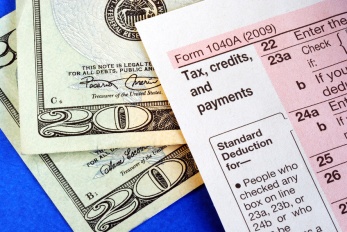If you are the parents of children under the age of 17, you may qualify for additional credits at tax time. If you have qualifying children, you may be eligible to claim the Child Tax Credit. This credit is a maximum of $1,000 per child. Your income is a determining factor as to whether you can claim the credit. The income thresholds became a permanent qualification requirement when the American Taxpayer Relief Act of 2012 was passed.
Tax credits reduce your tax liability to the IRS. Credits reduce taxes owed dollar-for-dollar. This differs from deductions as deductions only reduce taxable income amounts. The credit may only be claimed up to the amount of tax that you owe. With the maximum credit per qualifying child being $1,000, if your owed tax is only $533, as an example, then your credit would be reduced to $533.
There is, however, a way to receive an Additional Child Tax Credit where you can receive the additional funds in the form of a tax refund. To determine if you qualify for the Child Tax Credit or Additional Child Tax Credit, you must qualify under all seven qualifying tests.
Those seven tests are:
- Age Test – Children must be under age 17 at the end of a tax year, meaning they must still be age 16 or younger on December 31.
- Relationship Test – Qualifying children to be claimed must be related to you by either birth, marriage, an adoption, grandchild, or foster child situation. Qualifying children can also be descendants of your immediate family members, including nieces and nephews.
- Support Test – A qualifying child cannot provide more than his or her half of their own financial support in a given tax year.
- Dependent Test – Qualifying children must be claimable as dependent on your tax return.
- Joint Return Test – Married children are not permitted to file joint returns with spouses if filing jointly simply to claim tax refunds.
- Citizenship Test – To qualify, children must be a U.S. citizen. Other qualifying statuses are U.S. resident alien status or U.S. national status. IRS Publication 519 provides additional information regarding tax guidelines for aliens.
- Residence Test – Children living under your roof for at least 183 nights, more than 50-percent of the year, qualify. Children that are born in or pass away in a tax year count for an entire year of residency.
A couple of loopholes exist with the residence test requirement. Special circumstances are taken into consideration. These circumstances include school residency requirements, planned vacations, medical illnesses, military service, kidnapping, juvenile incarceration, or parental business-related reasons. When one of these circumstances is in question, the time away counts as time that the child lived with you.
Limitations and Restrictions
The way you and your spouse choose to file can have an effect on your ability to take any Child Tax Credits as it can reduce or completely eliminate the credit. Modified gross incomes (MGI) cannot be more than $110,000 for couples married filing jointly. If you are married filing separately, individually reported income cannot exceed $55,000. The threshold for singles and those filing head of household is $75,000.
If you file your return using a paper return, you will complete IRS Form 8812 in addition to your regular tax return if you qualify for either a Child Tax Credit or Additional Child Tax Credit. You can calculate your child tax credit at TurboTax.